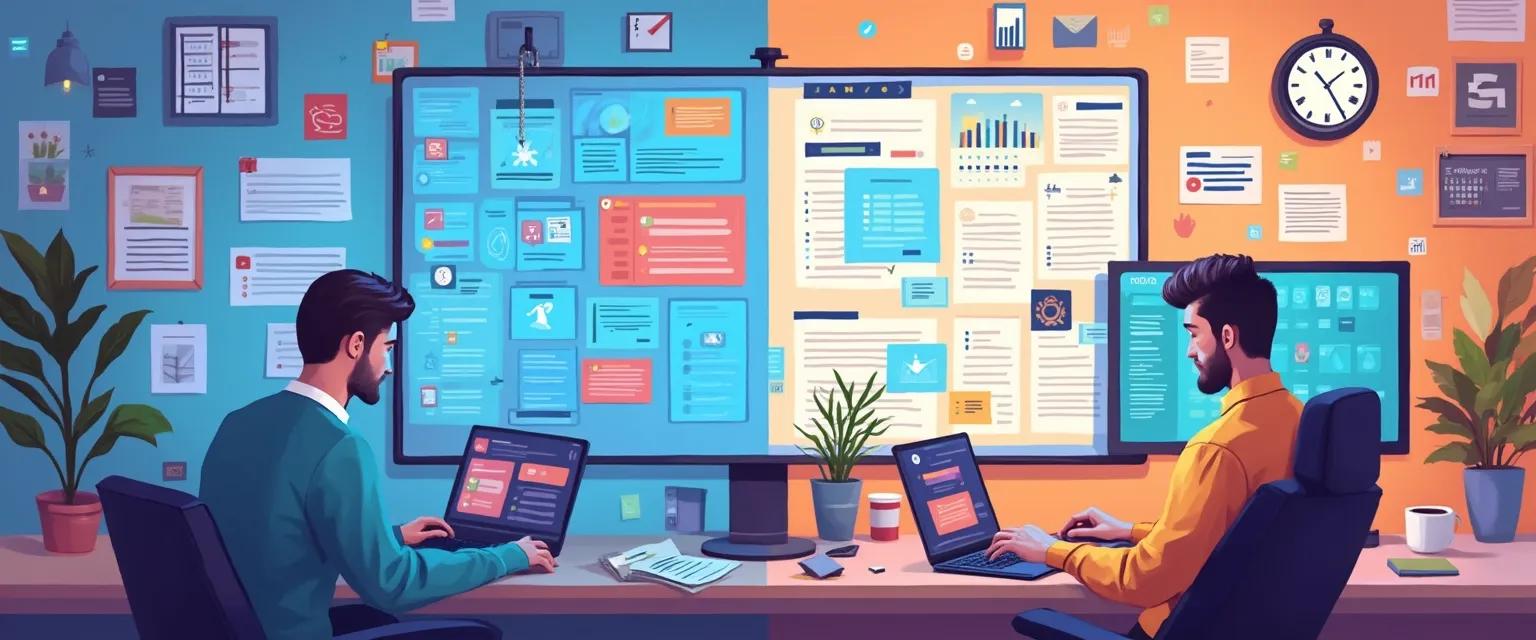Finding the Perfect App to Help with Procrastination for Your Productivity Style
Ever found yourself stuck in an endless scroll while important tasks pile up? Finding the right app to help with procrastination can be a game-changer—but only if it aligns with how your brain naturally processes information. Just like we all have different learning styles, we also have distinct productivity styles that influence how we work best and what tools will actually help us stop procrastinating.
The key to choosing an effective app to help with procrastination isn't just about fancy features or glowing reviews—it's about matching the app to your personal productivity style. Whether you're visually oriented, audio-driven, or need physical interaction, your brain has preferences for how it processes information and stays engaged. Understanding these preferences can make the difference between an app that collects digital dust and one that transforms your productivity habits for good.
Most productivity experts recognize three main styles: visual (seeing), auditory (hearing), and kinesthetic (doing). Each style responds differently to app features, and using the wrong match might explain why your previous attempts to overcome procrastination haven't stuck.
How to Identify Your Productivity Style Before Choosing an App to Help with Procrastination
Before downloading yet another app to help with procrastination, take a moment to identify your productivity style with these quick assessment questions:
Visual Productivity Style
Do you prefer charts over written explanations? Remember faces better than names? Love color-coding your notes? If these ring true, you likely have a visual productivity style. Visual procrastinators often get distracted by cluttered spaces (both physical and digital) and respond well to clean, visually appealing interfaces with graphs and progress indicators.
Auditory Productivity Style
Do you retain information better when you hear it? Prefer phone calls to texts? Find yourself talking through problems? Auditory processors often procrastinate when working in noisy environments or with apps that lack sound engagement. You might benefit from apps with voice notes, audio reminders, or even background focus sounds.
Kinesthetic Productivity Style
Do you fidget while thinking? Learn best through hands-on practice? Feel restless during long meetings? Kinesthetic learners procrastinate when forced to remain still or passive. Your ideal app to help with procrastination should involve physical interaction, movement tracking, or tactile feedback.
Research in cognitive psychology supports that matching learning materials to personal processing styles improves information retention by up to 40%. The same principle applies to productivity tools and strategies—when an app speaks your brain's language, you're more likely to use it consistently.
Best App to Help with Procrastination Features for Each Productivity Style
Now that you understand your productivity style, let's match it with the perfect app to help with procrastination:
For Visual Processors
Look for apps with these features:
- Color-coded task categories
- Progress bars and visual milestone tracking
- Calendar views with visual time blocks
- Achievement badges and visual rewards
Recommended apps include those with Kanban boards, mind-mapping capabilities, or visually satisfying "completed task" animations that give your brain the visual feedback it craves.
For Auditory Processors
Your ideal app to help with procrastination should include:
- Voice memo capabilities for task creation
- Customizable alert sounds for different priority levels
- Text-to-speech functionality for task lists
- Focus sound libraries (white noise, nature sounds)
Consider apps that integrate with voice assistants or provide audio cues when tasks are completed, giving your auditory system the satisfaction it needs to stay engaged.
For Kinesthetic Processors
Look for these features in your app to help with procrastination:
- Swipe gestures and physical interactions
- Haptic feedback (vibrations) for completions
- Movement break reminders
- Gamified elements requiring physical interaction
The best apps for kinesthetic learners incorporate movement into task management, like apps that encourage you to physically check off tasks or those that integrate movement breaks into your work sessions.
Taking the Next Step with Your Procrastination App
Once you've selected the right app to help with procrastination based on your productivity style, give yourself two weeks of consistent use before evaluating its effectiveness. Remember that even the perfect app requires an adjustment period. If you're still struggling after giving it a fair chance, consider trying an app that combines elements from multiple productivity styles—many of us have hybrid preferences that benefit from a mixed approach.
The most effective app to help with procrastination is ultimately the one you'll actually use. By aligning with your natural productivity style, you're setting yourself up for success rather than adding another abandoned app to your digital graveyard.




